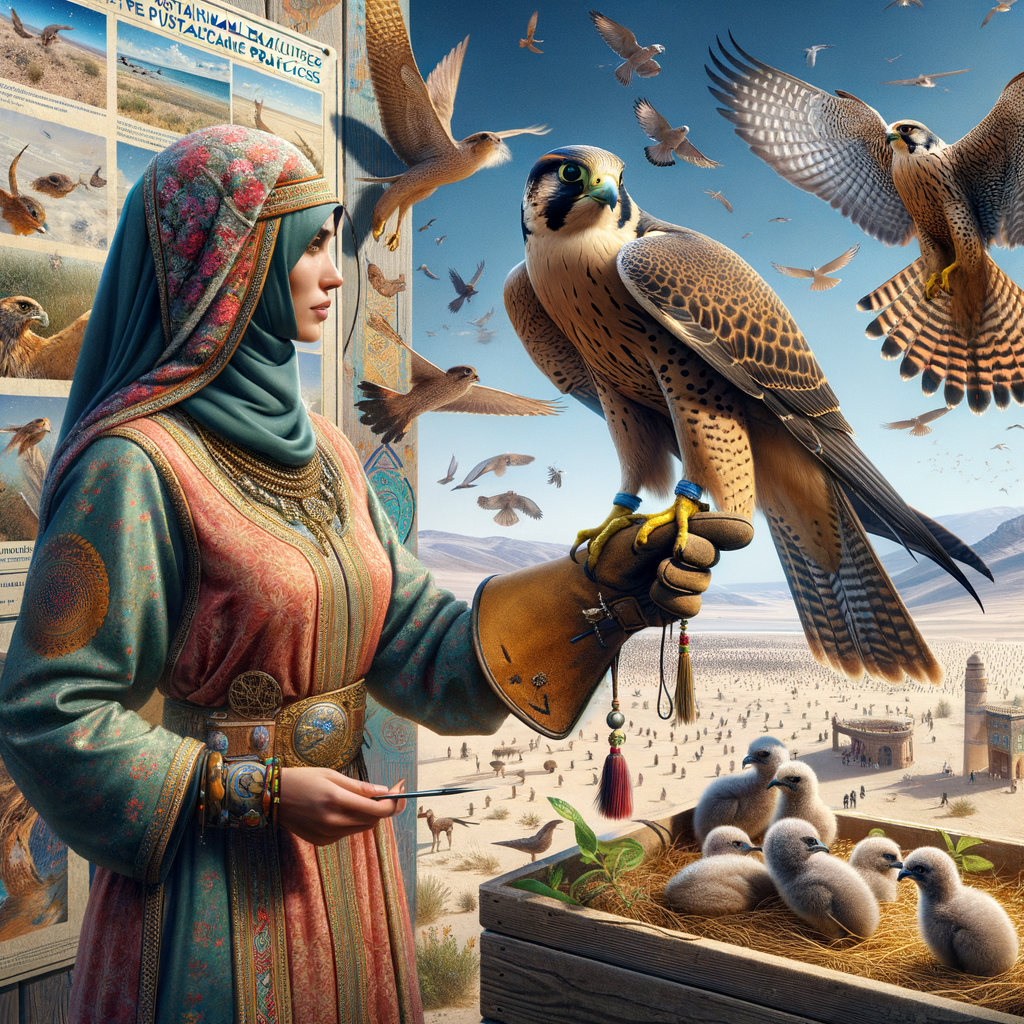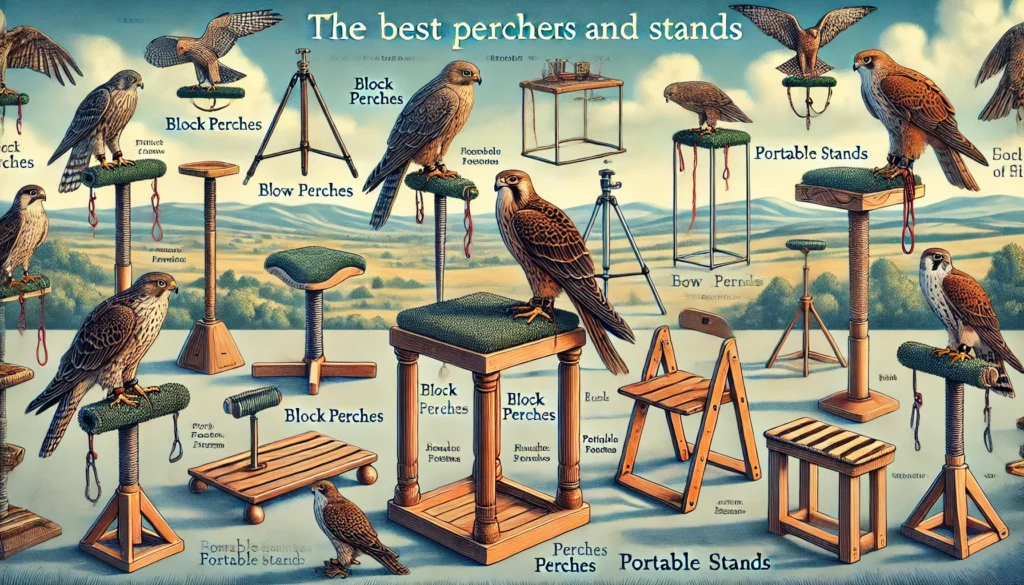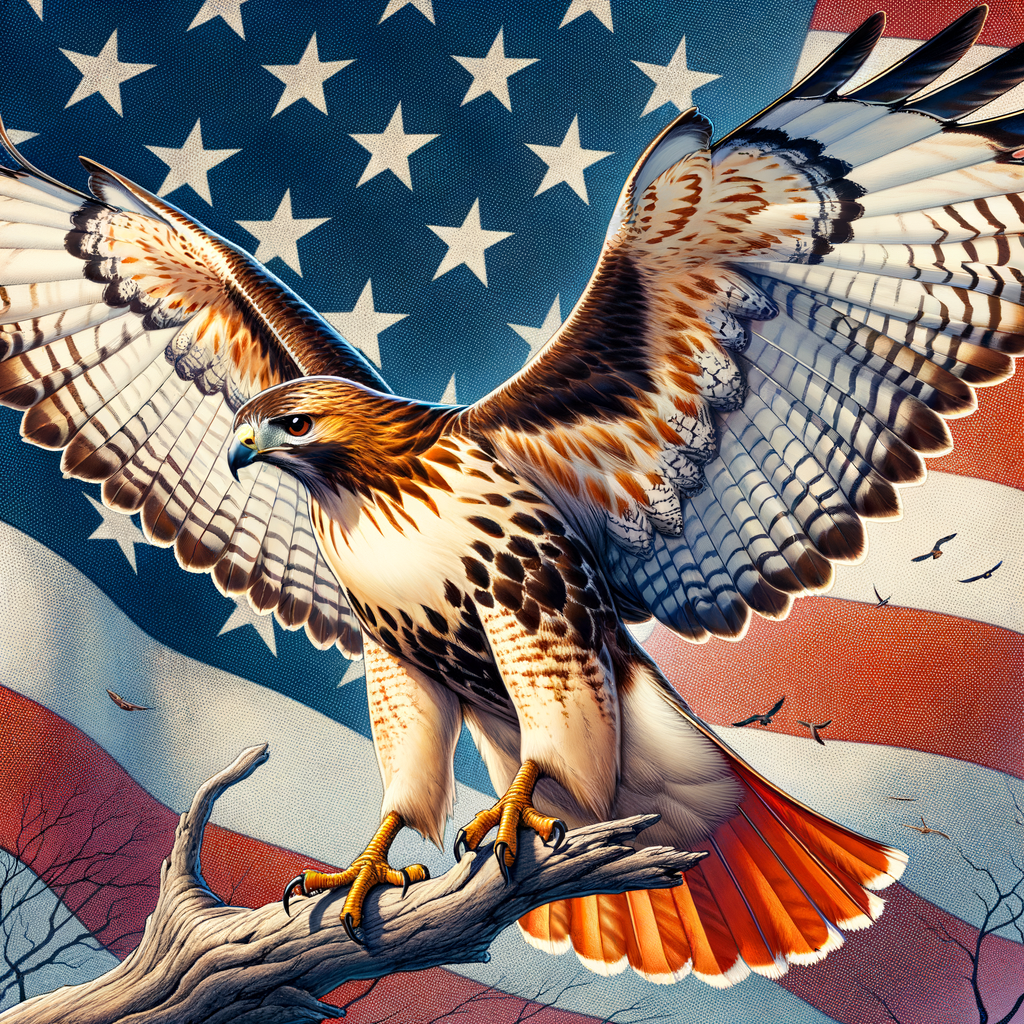Key Sustainable Falconry Practices
- Responsibly Source Birds: Make sure to get birds from reputable breeders or rescue centers to protect wild populations.
- Adequate Training: Provide proper training for both falconers and birds to ensure a safe and humane experience.
- Health and Welfare: Regularly check the health of your birds and give them the best possible care.
- Environmental Awareness: Respect natural habitats and avoid disturbing wildlife during falconry activities.
- Ethical Hunting: Hunt in a way that is fair to both the prey and the falcon, following all local laws and guidelines.
- Conservation Efforts: Participate in or support conservation programs that help protect birds of prey and their environments.
- Education and Outreach: Share knowledge about falconry with others to promote responsible practices and conservation.
Embracing Sustainable Falconry Practices: Nurturing Our Winged Companions
In this article, we’ll dive into the fascinating world of sustainable falconry practices. Whether you’re an experienced falconer or just starting out, our friendly guide will help you understand the importance of protecting our feathered friends. Just as the Irish farmers work tirelessly to preserve their precious lands, falconers must adopt eco-friendly practices that respect and protect nature.
Stay with us as we explore the essential elements of sustainable falconry. We’ll share tips, stories, and insights that will not only help you become a more responsible falconer but also contribute to the preservation of these awe-inspiring raptors. Let’s embark on this journey together and discover why sustainable falconry is vital for the future of our winged companions.
Understanding Sustainable Falconry
Sustainable falconry is all about practicing falconry in ways that protect and preserve the environment. When you engage in eco-friendly falconry, youâre ensuring that the art of flying and hunting with falcons not only continues for generations but also respects and maintains the natural ecosystems.
Falconry, a tradition that dates back thousands of years, has evolved considerably over time. By implementing sustainable practices in falconry, we are embracing methods that minimize harm to the environment. If you’re curious about the rich history of falconry, you can learn more here.
Key Principles of Eco-friendly Falconry
Using Eco-friendly Falconry Equipment
Choosing eco-friendly falconry equipment is a significant step toward sustainable falconry. Opt for gear made from natural or renewable materials, and avoid products that have a negative impact on the environment. From perches and stands to hoods and gloves, it’s important to invest in tools that are durable and responsibly sourced.
Learn the ins and outs of falconry equipment here.
Promoting Falconry Conservation
Falconry conservation is about more than preserving the falcon species; itâs about protecting their habitat and supporting the ecosystems they thrive in. This involves activities such as breeding programs, reintroduction projects, and habitat restoration.
You can read how falconry contributes to conservation efforts here.
Practicing Green Falconry Methods
Green falconry means incorporating environmentally friendly techniques into your falconry routine. This includes using renewable resources, reducing waste, limiting carbon footprints, and respecting wildlife laws. It’s essential to respect both local and international regulations concerning falconry.
For more on the legal aspects of falconry, visit Learn Falconryâs Legal Aspects.
Advocating for Ethical and Responsible Falconry
Itâs crucial to uphold ethical values in falconry. The health and well-being of your falcon should always be the top priority. Keep your falcons in well-maintained housing and ensure they receive proper nutrition and healthcare. This not only supports their well-being but also reflects your commitment to ethical falconry practices.
Delve into ethical falconry practices here.
Learning and Training for Sustainable Falconry
Training a falcon requires patience and respect for the birdâs natural instincts and behaviors. Using humane training techniques helps in raising a healthy and well-adjusted bird. Positive reinforcement and conditioning methods are recommended to enhance training outcomes while maintaining the falconâs welfare.
Discover more training techniques here.
Community Efforts in Falconry Conservation
Joining a local or international falconry club can amplify your impact. By connecting with other enthusiasts and participating in community-based conservation projects, you can share knowledge and support larger environmental efforts. Community involvement plays a pivotal role in ensuring sustainable falconry practices.
Explore various falconry clubs and associations here.
By implementing sustainable practices in your falconry journey, you contribute to a more eco-friendly and ethical world. Investigate further reading and resources on sustainable falconry practices on our dedicated page here. Let’s work together to protect the majestic falcons and their natural habitats.
Sustainable Falconry Practices in 2024
Conservation Efforts
Falconry isn’t just about training and hunting with birds of prey; it’s also about conserving these majestic creatures and their habitats. For example, the Saker Falcon Task Force has proposed a comprehensive governance system for the sustainable use of falcons. This system involves integrated landscape management, which helps preserve the natural habitats where these birds thrive. Moreover, they are forecasting trends and conducting risk assessments to better protect these falcons.
An exciting conservation milestone reached in 2024 involves the Green Balkans Wildlife Rehabilitation and Breeding Centre. They successfully hatched several Saker Falcons and are focused on reintroducing these birds back into the wild in Bulgaria. These efforts are crucial for maintaining and even boosting the falcon populations.
Falconry and Conservation
One of the most supportive organizations in falcon conservation is the International Association for Falconry and Conservation of Birds of Prey (IAF). They back various initiatives aimed at habitat preservation and research, which are essential for understanding and protecting these birds. Additionally, the Falconry Fund actively contributes to projects like “Project Goshawk” and uses satellite telemetry to track rehabilitated Golden Eagles. Such technologies provide valuable data that help in the conservation efforts.
Regulations and Quotas
Table: Peregrine Falcon 2024-2025 Biennium Regulations
| Regulation Aspect | Description |
|---|---|
| Age of Falcons Allowed for Take | Young Peregrines |
| Location | Montana |
| Impact on Wild Populations | No negative impact observed |
| Renewal | Every 5 years with annual reporting by Dec 31st |
Best Practices
Best practices in falconry emphasize not just the skill and tradition involved but also the importance of sustainable use of wildlife.
Here are some of the key best practices:
- Hunting Practices: Falconers hunt prey in its natural state and habitat, making sure the process is as natural as possible for the raptors.
- Habitat Preservation: Many falconers are actively involved in conservation efforts to protect the natural habitats of raptors. This includes supporting initiatives and organizations dedicated to habitat preservation.
- Bird Welfare: The welfare of the birds is of utmost importance. Ethical falconers ensure their birds are well cared for, healthy, and content.
Licensing and Database Improvements
Table: Falconry Database Improvements Timetable
| Period | Activity |
|---|---|
| Aug 1-3, 2023 | Database Down for Improvements |
| Ongoing | Ensure accurate data before ‘Save’ operation |
| Annual | Reporting required by December 31 each year |
In 2024, significant advancements have been made in improving the 3-186A Falconry database. This includes enhancements requested by State Falconry Administrators for better data accuracy and functionality. These improvements assist in tracking falconry activities more efficiently, helping in the management and conservation efforts.
Falconry Practices and Environmental Conservation
Falconry merges the traditional art of hunting with modern conservation efforts. Birds such as peregrine falcons and Harrisâs hawks are not only used for sport but also for environmentally friendly bird control methods, offering a natural deterrent that doesnât harm non-target species. This way, falconry demonstrates how traditional practices can coexist harmoniously with modern conservation needs.
By adhering to regulations, practicing sustainable hunting, and supporting conservation projects, falconers worldwide play a significant role in protecting these beautiful birds and their environments.
Final Thoughts on Sustainable Falconry Practices
We’ve explored numerous sustainable falconry practices and highlighted the ongoing efforts to preserve this ancient art while ensuring the welfare of birds of prey. From conservation projects that reintroduce species like the Saker Falcon, to regulations ensuring the responsible hunting and care of raptors, 2024 shows a promising dedication to eco-friendly falconry.
Through various initiatives, such as habitat preservation and rigorous licensing procedures, falconers demonstrate their commitment to maintaining the balance between tradition and modern ecological responsibility. By supporting conservation projects and adhering to best practices, falconers play a vital role in protecting both their birds and the natural world.
Ultimately, the emphasis on sustainability within falconry not only protects these majestic creatures but also ensures their presence in our skies for generations to come. Every effort counts, as together we strive to keep this cherished heritage alive while fostering a healthier ecosystem.



